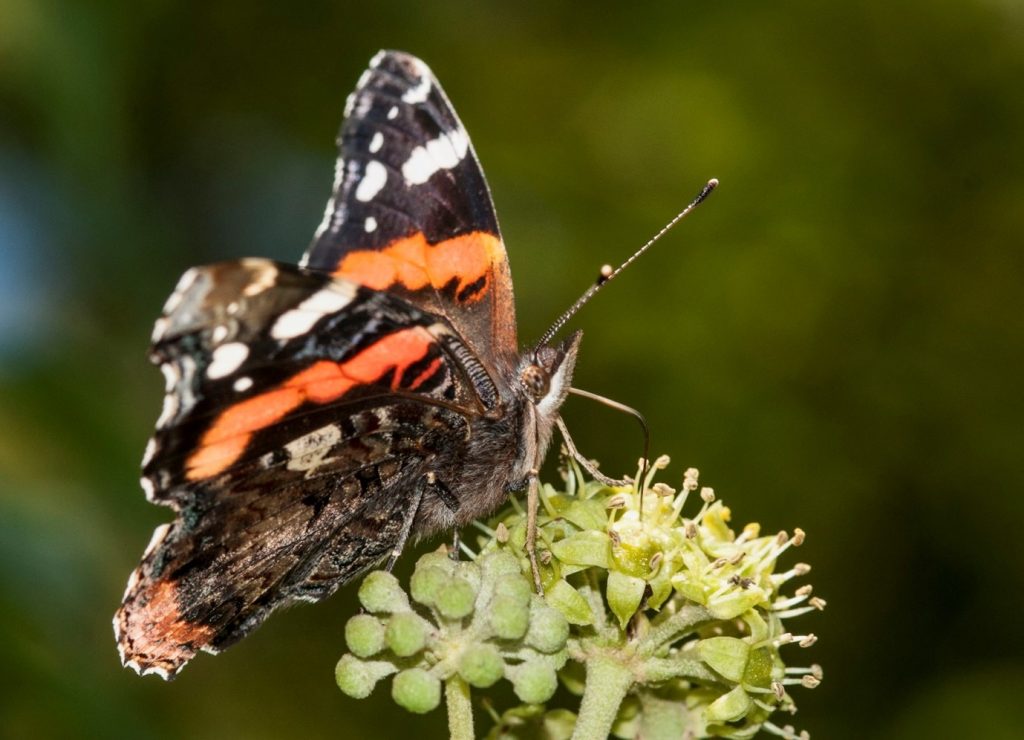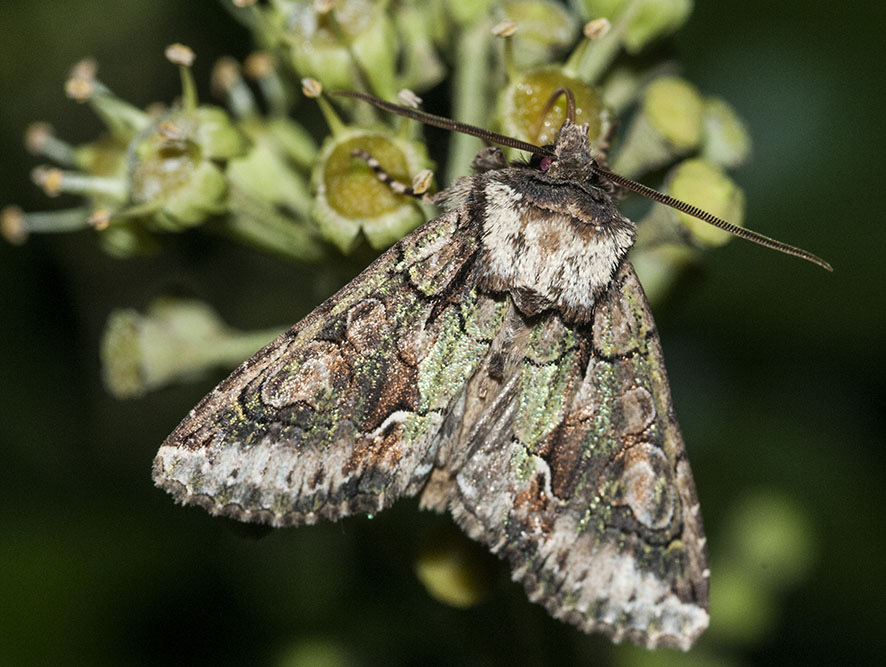This article was recently published in the Farnham Herald. It was submitted by the Farnham Biodiversity Group – credit should be given to Martin Angel.
The Herald has published recent articles from the Farnham Biodiversity Group that drew readers’ attention to the plight of threatened species, such as swifts, stag beetles and hedgehogs. This article is about a plant that is both commonplace and much misunderstood: ivy, and its role in biodiversity.

Ivy is a much maligned plant. While falsely accused of killing trees, it provides essential food resources to a broad range of wildlife at a critical time of year – the autumn. It is curious in having two types of leaf. One is the familiar palmate shaped leaf form that grows in the shade. The other develops on branches that have climbed up into full sun light, whose leaves irreversibly change to being simple. It is on these simple leaved branches the ivy flowers from mid-September through to mid-November. Its small green flowers are clustered in spherical heads. They produce copious quantities of nectar, just when many invertebrates are either preparing for hibernation or for migration to warmer climes. Silver Y moths and red admiral butterflies are two species that regularly commute to Southern Europe for winter. On sunny days the ivy blossom is abuzz with bees, wasps, hoverflies, and butterflies, and after dark it is just as busy with moths, woodlice even centipedes, millipedes, and hornets. The berries provide sustenance to birds and small mammals that sees them through to early spring.

So much of our local biodiversity is sustained by ivy, it is distressing to see it being unnecessarily cut back in our woodlands and roadside verges. Readers are asked to value its contribution to the environment; for more information contact Farnham Biodiversity Partnership:
contact@FarnhamBAP.org.uk, or via Facebook Farnham Biodiversity Partnership.
Photographs:
1. Red admiral butterfly feeding on ivy blossom.
2. At night ivy blossom is visited by many invertebrates including at least 47 species of moth such as this green brindled crescent, a species of conservation concern in Surrey.
